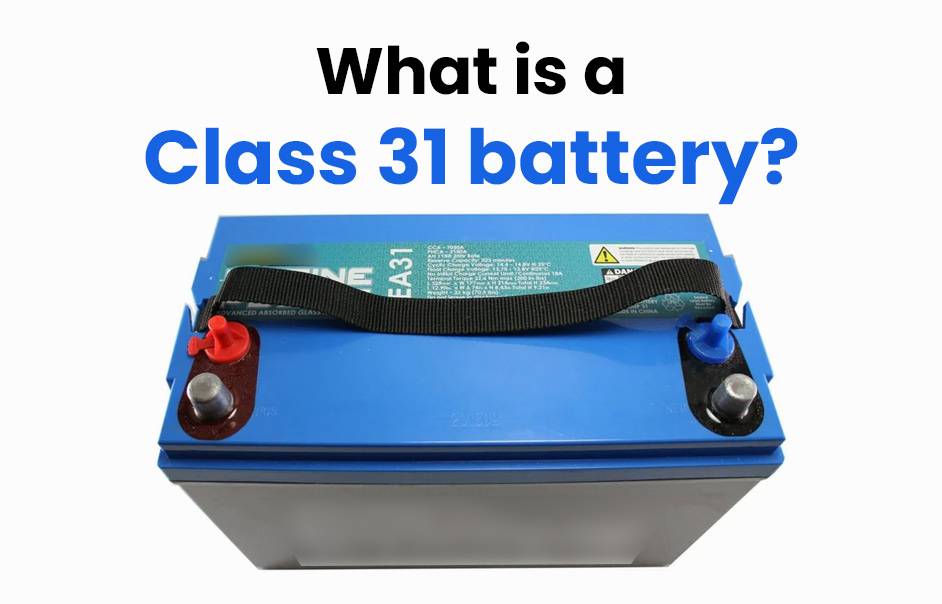Discover the Class 31 battery – your ultimate power solution! From its history to various types, applications, pros, and cons, this blog post covers it all. Whether you’re a tech enthusiast or outdoor adventurer, learn how this powerhouse can revolutionize your device charging experience. Plus, get essential maintenance tips for optimal performance. Don’t miss out on the secrets of this remarkable technology!
History and Development of Class 31 Batteries
Explore the remarkable journey of Class 31 batteries, witnessing technological leaps and addressing diverse industry needs.
- Early Beginnings:
- Class 31 batteries emerged in the early 20th century for vehicles and machinery.
- Initially bulky, advancements in design and manufacturing processes ensued.
- Technological Milestones:
- Ongoing research led to breakthroughs like advanced electrodes and improved electrolytes.
- Maintenance-free sealed lead-acid (SLA) batteries were introduced in the late 1970s, eliminating regular upkeep.
- Environmental Innovations:
- Recent developments focus on eco-friendliness, reducing toxic elements like cadmium or mercury.
- Nickel-metal hydride (Ni-MH) and lithium-ion (Li-ion) technologies contribute to cleaner energy storage.
- Future Prospects:
- Advancements continue towards increased capacity, enhanced charging efficiency, and reduced size and weight.
- Class 31 batteries play a pivotal role in the era of renewable energy, contributing to a sustainable future.
Types of Class 31 Batteries
Discover the diverse world of Class 31 batteries, each tailored to specific needs, offering durability, convenience, or high current output.
- Flooded Lead-Acid Battery:
- Commonly used in backup power systems and electric vehicles.
- Known for durability and an extended lifespan.
- Sealed Lead-Acid Battery (Maintenance-Free):
- Ideal for applications where regular maintenance is challenging.
- Requires no watering or electrolyte checks, ensuring hassle-free use.
- Gel Cell Battery:
- Immobilizes electrolyte with a thickening agent, providing resistance to vibration and shock.
- Well-suited for rugged environments.
- AGM (Absorbent Glass Mat) Battery:
- Utilizes fiberglass mats for electrolyte absorption and high conductivity.
- Low internal resistance, excelling in applications requiring high current output.
- Tailored Solutions:
- Each Class 31 battery type offers unique advantages.
- Choose based on your specific requirements, whether it’s durability, convenience, shock resistance, or high current output capabilities.
Uses and Applications of Class 31 Batteries
Explore the vast applications of Class 31 batteries, celebrated for their robust power and durability, making them indispensable across diverse industries.
- Automotive Powerhouses:
- Crucial for heavy-duty vehicles like trucks and buses, providing reliable starting power in extreme weather.
- Capable of handling the electrical demands of modern vehicles.
- Marine Reliability:
- Widely used in marine applications, enduring harsh water conditions.
- Powering essential equipment on boats, including navigation lights, radios, and pumps.
- Renewable Energy Storage:
- Integral to renewable energy systems such as solar and wind installations.
- Stores excess energy during peak production for later use.
- Industrial Backups:
- Critical in industrial settings for uninterrupted power supply.
- Commonly employed in backup power systems for data centers and telecommunications facilities.
- Versatility in Recreation:
- Ideal for recreational activities like camping and off-grid adventures.
- Ensures comfort and convenience by running appliances and charging electronic devices.
- Cross-Domain Capabilities:
- With their impressive capabilities spanning automotive, marine, renewable energy, industrial, and recreational sectors, Class 31 batteries offer versatile solutions.
Advantages and Disadvantages of Class 31 Batteries
Discover the strengths and considerations of Class 31 batteries, a popular choice in various industries, through a concise overview of their advantages and disadvantages.
- Advantages:
- High Energy Density: Ideal for space-limited applications due to their ability to store more energy in a smaller size.
- Temperature Resilience: Performs exceptionally well in extreme temperatures, ensuring reliability in challenging environments.
- Long Lifespan: Designed for frequent charging cycles without compromising performance, making them suitable for extended use.
- Quick Recharge: Offers a shorter charging time compared to some other battery types, reducing downtime during critical operations.
- Disadvantages:
- Higher Cost: Class 31 batteries can be more expensive than traditional lead-acid or AGM batteries due to advanced technology.
- Maintenance Requirements: Proper installation and regular inspections are essential for optimal performance and safety, contributing to specific maintenance needs.
- Conclusion:
- While Class 31 batteries present significant advantages like high energy density, long lifespan, and quick recharge capabilities, it’s important to consider the higher cost and specific maintenance requirements associated with their advanced technology.
Maintenance and Care Tips for Class 31 Batteries
Discover the essential maintenance and care tips for Class 31 batteries to ensure optimal performance and longevity. By incorporating these simple practices, you can avoid unexpected issues and extend the lifespan of your battery.
- Regular Inspection:
- Visual Checks: Regularly inspect for signs of damage, wear, cracks, leaks, or loose connections.
- Prompt Action: Address any unusual findings promptly to prevent further issues.
- Cleaning:
- Surface Maintenance: Keep the battery surface clean from dirt and debris using a soft cloth or brush.
- Prevent Accumulation: Gently wipe away dust or grime to maintain a clean and efficient battery.
- Proper Charging:
- Follow Guidelines: Adhere to the manufacturer’s charging guidelines to prevent overcharging or undercharging.
- Optimal Performance: Proper charging practices contribute to maintaining battery health and performance.
- Avoid Deep Discharge:
- Prevent Full Discharge: Avoid fully discharging the battery to preserve overall capacity and lifespan.
- Timely Recharge: Recharge before reaching low levels whenever possible.
- Temperature Considerations:
- Protect from Extremes: Avoid exposing the battery to excessive heat or cold, preventing premature failure.
- Climate Awareness: Be mindful of temperature impacts on battery performance.
- Safety Precautions:
- Handle with Care: Always handle batteries with care, using proper safety equipment like gloves.
- Prioritize Safety: Incorporate safety measures to ensure responsible battery handling.
Remember, these maintenance practices are crucial for optimizing the efficiency and longevity of your Class 31 batteries, ensuring they provide reliable power when needed. Proper care is the key to maximizing the benefits of any electrical device, including batteries!

